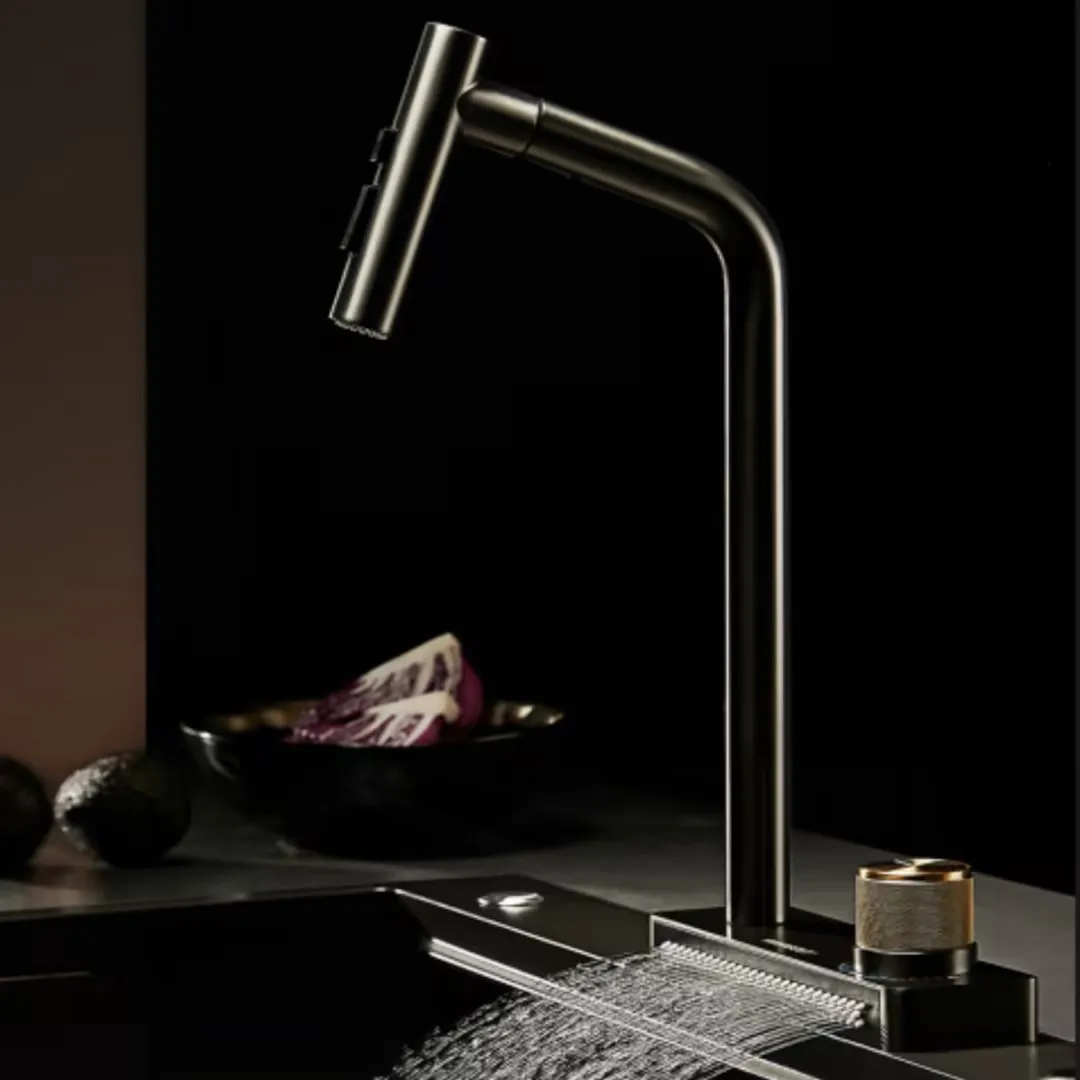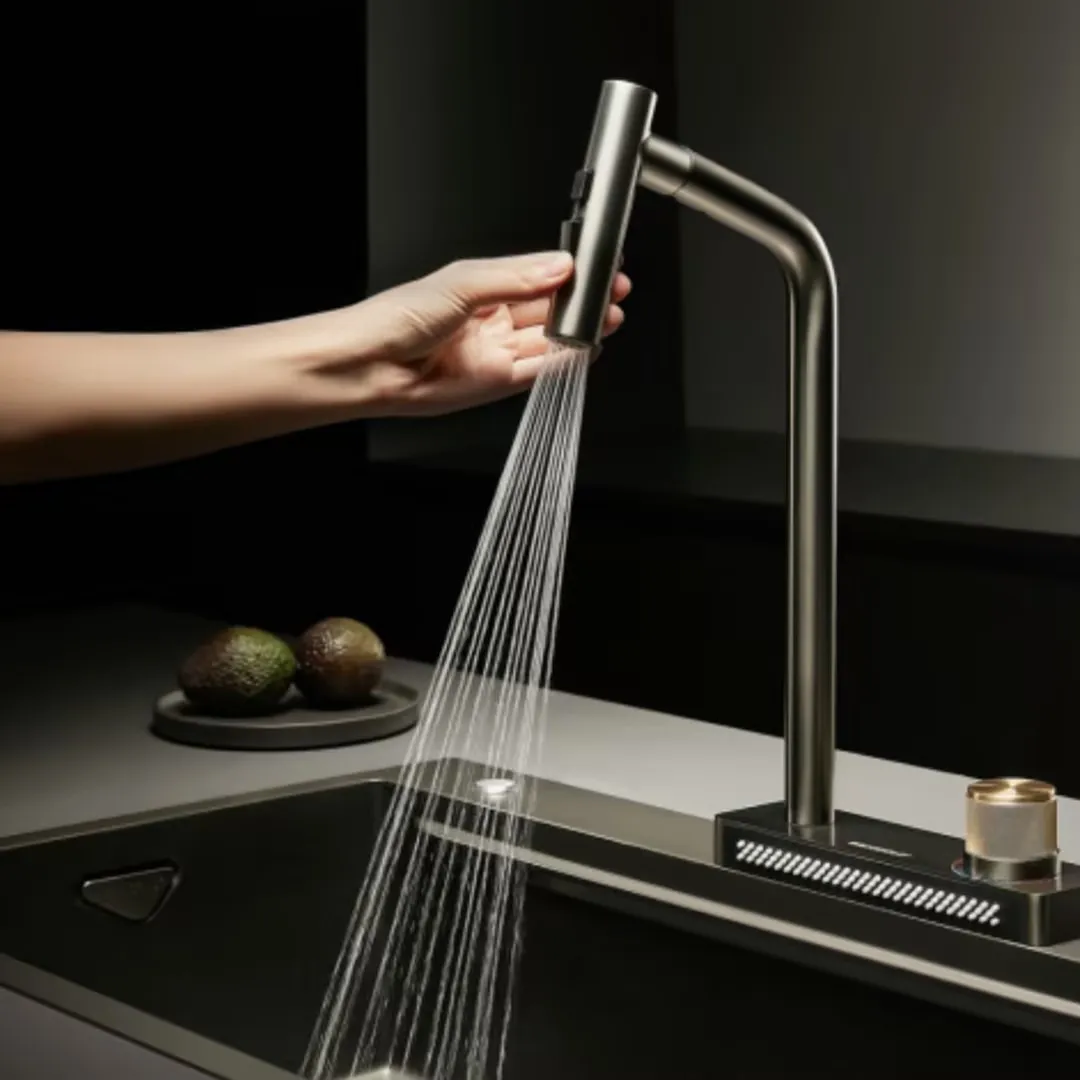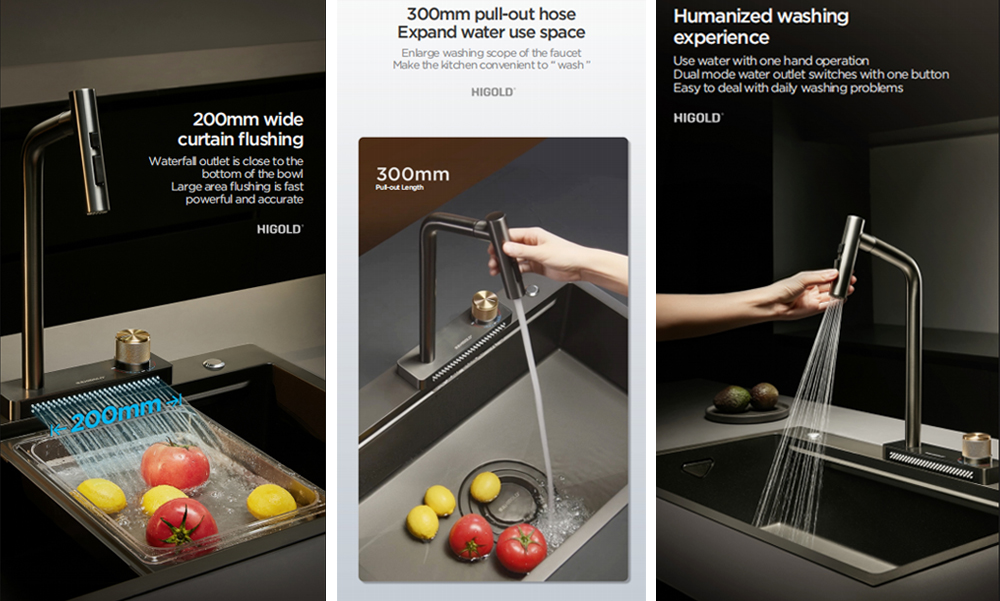Waterfall faucets, with their unique design and smooth water flow, have become increasingly popular in recent years. Water from these faucets typically flows from a wide spout, resembling a waterfall, creating a visually pleasing experience.
While appreciating the beauty of waterfall faucets, many people inevitably wonder, "Do these sink faucets waste water?" With environmental protection becoming increasingly important, this question has become a focal point for many consumers.
This article will delve into whether waterfall faucets waste water, analyzing their operating principles, differences from traditional faucets, potential water flow issues, and water efficiency during use. We will examine this issue from multiple perspectives to help consumers make more informed decisions.

How do waterfall faucets work?
Inspired by natural waterfalls, waterfall faucets typically feature wide spouts, creating a broad, even flow. Compared to traditional faucets, waterfall faucets offer a more visually striking water flow pattern. The flowing and cascading water creates a sense of being immersed in a waterfall, hence the name "waterfall faucet." This design style is commonly found in bathrooms and kitchens, especially in modern minimalist homes.
Structurally, a waterfall sink faucet is simple, consisting primarily of the faucet body, a spout, and a valve to control the water flow. After being controlled by the valve, the water flows out of the wide spout, typically over a large flow area, creating a unique visual effect.
1. Waterflow Design
The flow design of a waterfall faucet typically uses specialized channels and valves to adjust the speed and flow rate of the water. Many high-end waterfall faucets are equipped with water-saving devices, which ensure flow while reducing water waste. However, their wide spout and large flow area can easily create the illusion of wasting water.
2. Flow Characteristics
The flow design of a waterfall faucet is unique, typically providing a relatively high flow rate to enhance the visual effect and comfort of the water flow. Compared to traditional faucets, waterfall faucets may require more water to achieve this effect. The amount of water flow is closely related to the design and usage of the sink faucet.

What is the difference in water efficiency between waterfall faucets and traditional faucets?
Traditional faucets typically have a more concentrated flow, with a smaller, more focused area. This results in them using less water in the same amount of time. Especially in modern homes, many sink faucets are equipped with flow restrictors or water-saving devices to maximize water conservation. In contrast, waterfall faucets, with their wide spouts and more dispersed flow, can easily give the impression of being "wasteful."
1. Flow Comparison
Conventional sink faucets typically have smaller spouts and a more concentrated flow. Therefore, without a water-saving device, their flow rate is typically 6-9 liters/minute. In contrast, waterfall faucets can sometimes reach 12-15 liters/minute, especially with wider spouts. The increased flow area often means more water is released. While the visual effect of the water flow is enhanced, the higher flow rate means that, if used without a water-saving device, more water is likely to be wasted than with traditional faucets.
2. Water-Saving Devices
To address water scarcity and improve water efficiency, many modern waterfall faucets incorporate water-saving devices such as flow control valves and bubble mixing devices. These devices mix air with the water flow, reducing the actual amount of water used. This effectively reduces water waste while ensuring smooth water flow and comfort. Therefore, waterfall sink faucets with water-saving devices can reduce waste while maintaining water flow, ultimately saving water.

Do waterfall faucets waste water?
While the design and visual appeal of waterfall faucets have attracted many consumers, whether they waste water remains a concern. From a water flow perspective, waterfall faucets have a relatively high flow rate, which can lead to water waste. However, the extent of water waste is not absolute and depends on several factors.
1. Faucet Usage Time
The degree of water waste is closely related to usage time. If a user leaves a waterfall faucet running for extended periods without considering the flow rate or usage needs, this can lead to unnecessary water waste. For example, many people unconsciously leave the sink faucet running for extended periods when washing food or washing hands, resulting in water waste.
2. Adjusting Water Flow Intensity
Waterfall faucets typically have a strong water flow, especially without a water-saving device installed. This can lead to relatively high water flow. If users fail to adjust the water flow during use, this can easily lead to water waste. For example, simply flushing without adjusting the water flow intensity can result in significant water waste.
3. Integrating Water-Saving Features
As mentioned earlier, modern waterfall faucets often incorporate water-saving features. These devices reduce water waste by aerating or restricting the flow. Waterfall faucets equipped with water-saving technology offer significantly better water efficiency than traditional designs.

How to Avoid Water Waste from Waterfall Faucets?
While waterfall faucets may have inherent water waste risks, consumers can avoid this problem through proper use and selection. Here are some effective ways to reduce water waste from waterfall faucets:
1. Choose a waterfall faucet with a water-saving feature
When purchasing a waterfall faucet, consumers can choose models with a water-saving feature. For example, faucets with flow-limiting valves or bubble-mixing devices can significantly reduce water waste by mixing air with the water flow, reducing water flow while maintaining a comfortable flow.
2. Properly Adjust Water Flow Intensity
When using a waterfall faucet, users should adjust the water flow intensity according to their needs. For simple tasks like washing food or washing hands, the water flow intensity can be reduced appropriately to avoid prolonged high-flow conditions. Users can open the faucet fully when a high flow is required, while keeping the flow to a low setting is recommended for other situations.
3. Regularly Inspect the Faucet
Over time, components such as valves and filters on sink faucets may age or become damaged, leading to an abnormally high water flow. Therefore, regularly inspecting the working condition of waterfall faucets to ensure the proper functioning of their water-saving devices is an important measure to reduce water waste.
4. Strengthen Water Use Awareness
Consumers should raise their awareness of water conservation. In daily life, try to avoid leaving sink faucets running for extended periods, especially when the water flow is high. Proper water use can effectively prevent waste, especially during peak usage periods or in areas with water shortages.
What types of sink mounting options does Higold produce?
Higold manufactures top-mount, under-mount, and flush-mount stainless steel sinks. This variety ensures compatibility with different countertop styles and installation preferences. Buyers can order multiple mounting types to appeal to wider customer bases in their target markets.


